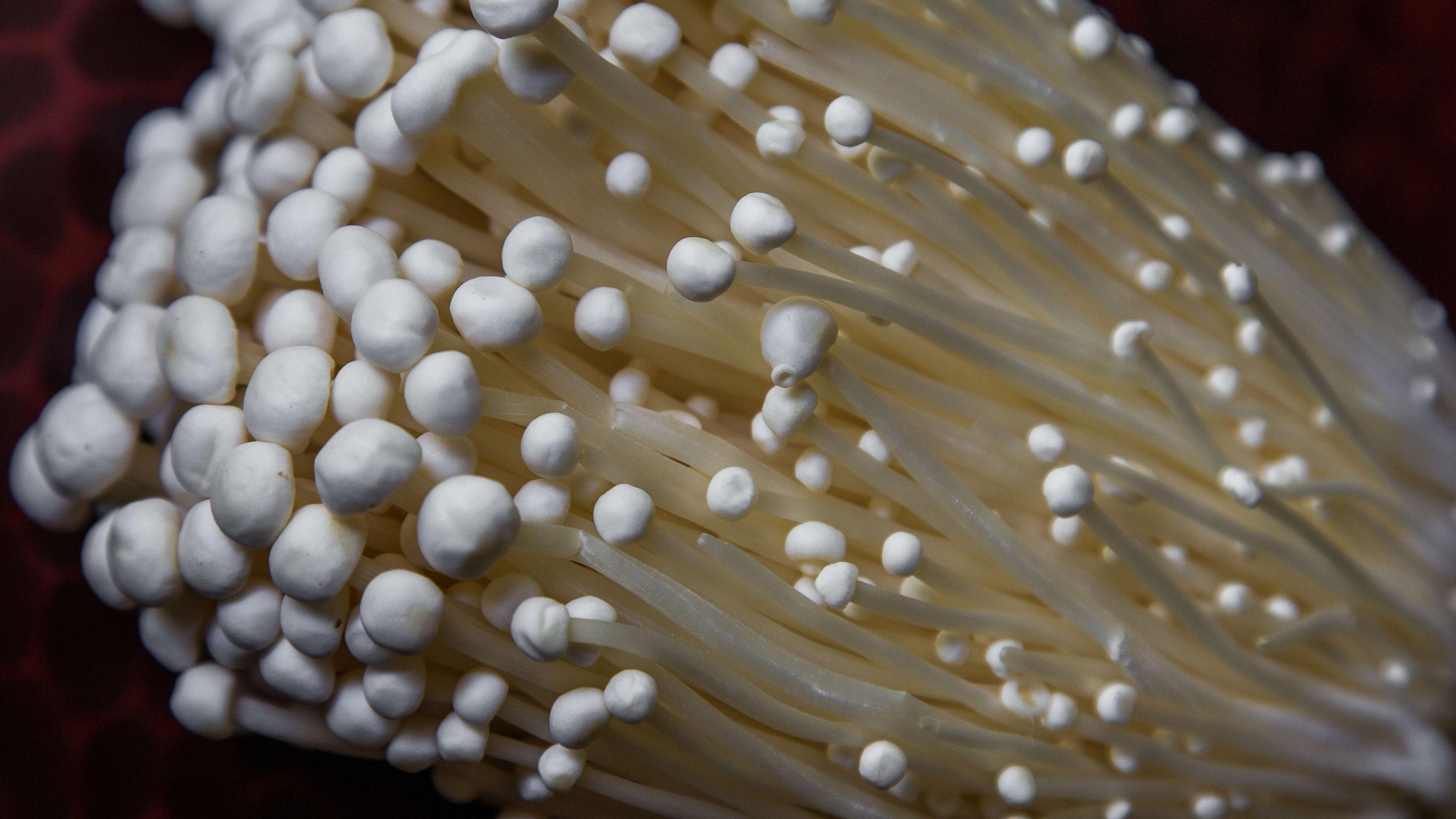Why Are Enoki Mushrooms Suddenly So Expensive?
An investigation into the 500% price increase of my favorite fungi
I like to luxuriate in the produce section of my favorite Asian supermarket. This is not an easy task. The aisles are narrow and crowded with all manner of fruits and vegetables. Still, it brings me comfort to pick out a few purple sweet potatoes, contemplate an Asian pear swaddled in Styrofoam netting. There are a few staples I always stock up on: knobs of ginger, bulbs of leafy green baby bok choy, sheafs of green onion and a sturdy kabocha squash. When I get to the part of the refrigerated aisle where the mushrooms are arranged, I try to buy a variety.
Mushrooms keep well in the fridge and can be sautéed, steamed, deep-fried, even blended into an earthy bisque. Some mushrooms are pricey and so I pass over them. Shiitake prices seem to fluctuate and matsutake are generally expensive. Enoki, a long, thin white mushroom used in many Asian cuisines, I count on as my cheap mushroom stalwart—generally between 89 cents to $2 a package, sometimes even two for 89 cents!
But on my last few trips to the store, enoki mushrooms have ranged between $4.99 and $5.99 a package. The first time I saw the price increase I stopped walking and stared. I knew that food prices were increasing but I expected cents, maybe a dollar or two—not a 500% increase. Later that week, a friend posted a photo to her Instagram story of a package of enoki mushrooms, similarly priced, with a caption reading: "What's going on with the enoki mushroom mafia??" I shared her dismay. The following week I went to a different grocery store and saw them on sale for 6.99. My fridge has remained enoki-less for months.
I decided to try to find out what was causing this leap in price. First, I spoke to someone working in said favorite Asian supermarket. She said the price increase happened recently, probably in the last few months. Though she declined to give me her name, she said that her impression was something had happened to enoki mushroom suppliers earlier in the year, which caused them to be pulled from the market. When they started to be sold again, they were expensive. Speculating about the mysterious incident earlier in the year, she said, "Maybe the problem is Americans don't know how to eat them. They like to eat mushrooms in salad, but we [Asians] know you have to cook these mushrooms."
I cannot imagine trying to eat an enoki mushroom raw. Stringy, tooth-some, and a little slimy if uncooked, I avoid this by putting enoki mushrooms in risottos, stews, and soups. I like to slip its stalks next to soft blocks of silken tofu in a carefully cordoned hotpot, letting the gentle brine of dashi simmer its way into each vegetable. I sauté it in butter, garlic, and soy sauce to add to pasta. If I'm feeling fancy, I dust enoki in corn starch and heat a layer of corn oil in a pan. When hot, I take a spatula and push the enoki into the spitting oil, fanning out the mushroom fronds. I keep them in the heat for a minute or so and then flip them, pushing the strands down again. After about a minute, I drain them on a plate of paper towels, dusting the crispy mushroom bouquets in fine salt and shichimi togarashi. Which is all to say: Enoki mushrooms in a salad? No way.
But white Americans' lack of culinary knowledge surrounding enoki mushrooms didn't answer the question of why they were suddenly so expensive. I tried calling a U.S.-based mushroom company supposedly supplying the variety but was told by a telephone operator that their website was outdated—they hadn't grown enoki mushrooms for years. I called four more enoki mushroom suppliers, this time companies that sourced their mushrooms in China and Korea and sold them in the United States. People either directed me to full voicemail boxes or declined to comment. It was starting to feel like there really was an enoki mushroom mafia.
Finally, after some digging on my own, I began to piece together parts of the picture. Beginning in 2020, enoki mushrooms appear to have suffered rolling recalls for listeria contamination. These recalls continue well into 2021, the most recent among them occurring mere weeks ago. Food recalls are expensive, requiring large amounts of food product to be scrapped. Consider also that most enoki mushrooms are grown in Asia and shipped to the United States, a supply chain that has been disrupted by labor and material shortages the world over. But supply chain issues and food recalls don't mean that demand lessens; if anything, people like me are still seeking out their favorite fungi. Resulting in my hypothesis: continuous demand + recalled supply + issues in transport = skyrocketing enoki mushroom prices.
It doesn't look like enoki prices will return to their reasonable, staple-level price for a while. So, though all Asian mushrooms seem to have experienced a slight price uptick in my neighborhood, these days I grit my teeth and pay the extra few cents for shiitake and buna-shimeji. When I score a package of emperor mushrooms on sale, I daydream about thinly slicing them into strips and crisping them with smoky paprika and soy sauce. I chop button mushrooms and mix them into a creamy mushroom rice bake. I make do while my fridge remains enoki-less.
